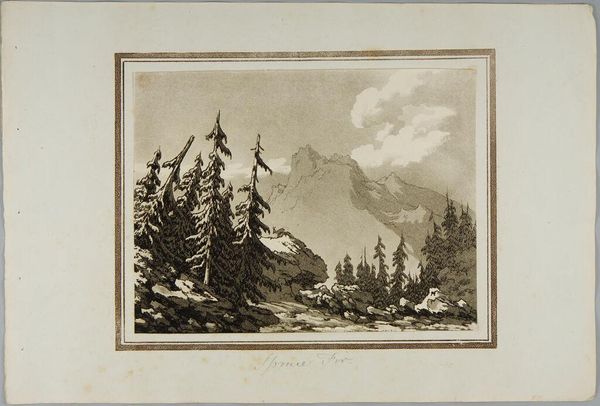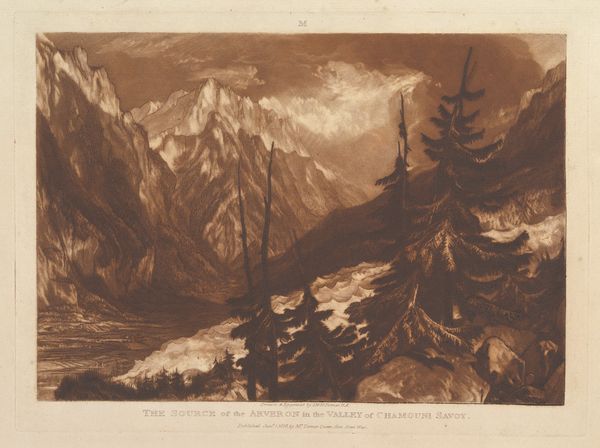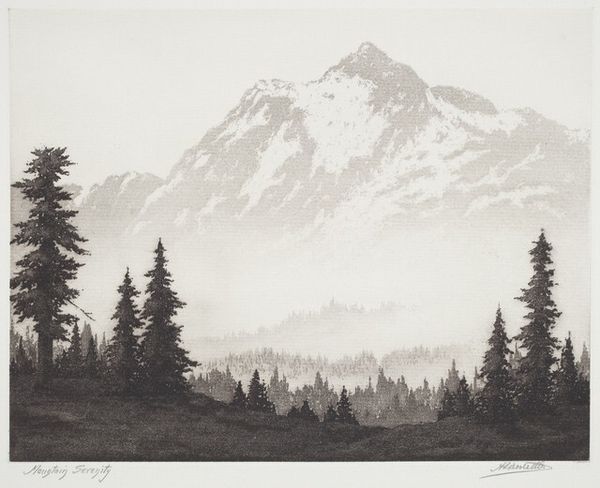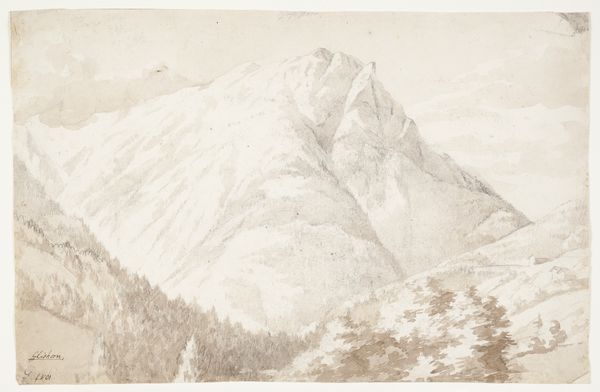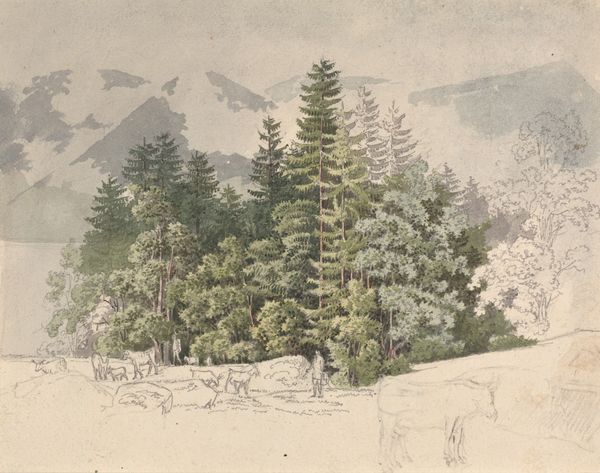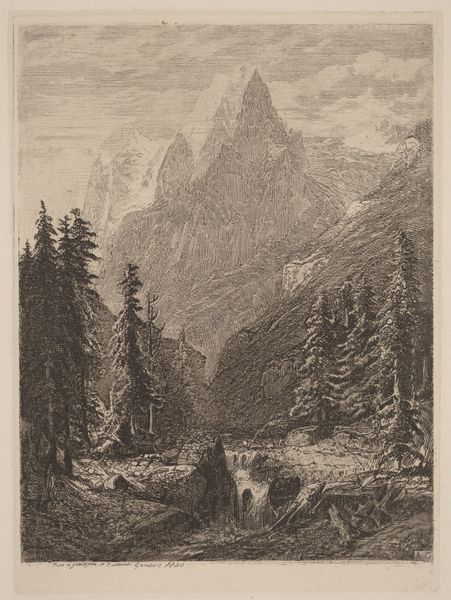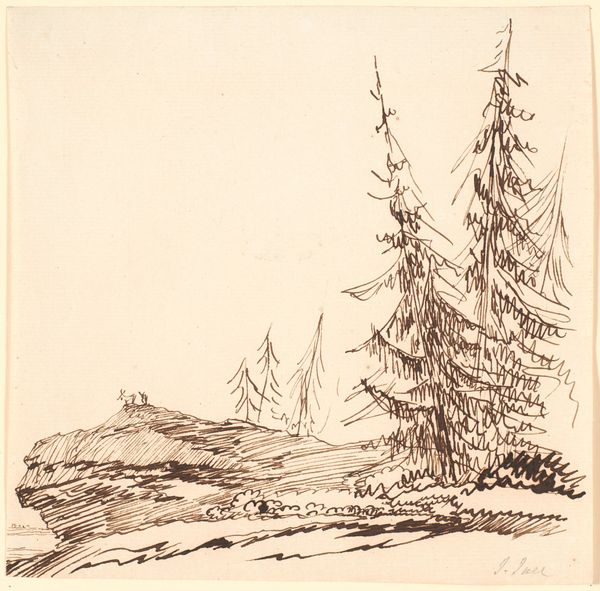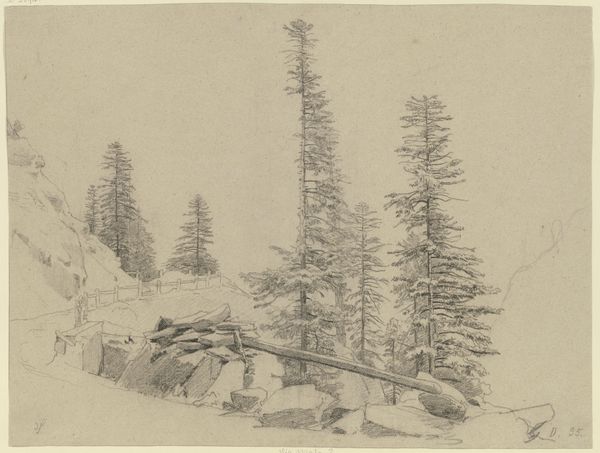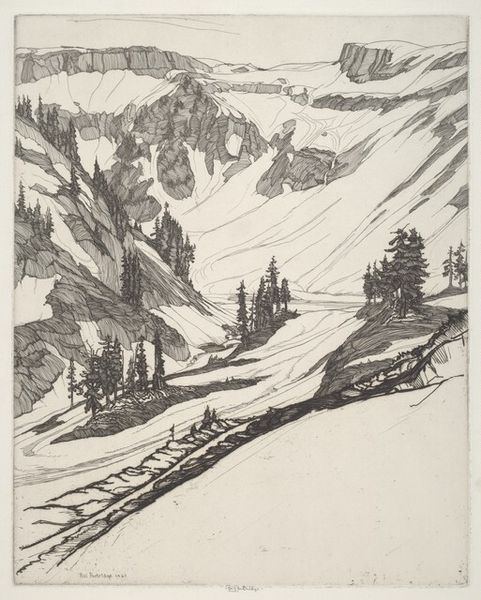
drawing, print, etching, paper
#
drawing
# print
#
etching
#
landscape
#
etching
#
paper
#
romanticism
Dimensions: 242 × 316 mm
Copyright: Public Domain
Editor: This is "Pine Trees in the Mountains," an etching by John Robert Cozens, created in 1789. I find the scene so serene, almost melancholy in its quiet grandeur. What do you see in this work, particularly considering its historical context? Curator: Serenity, yes, but perhaps also a subtle critique. Consider that Cozens was working during a time of immense social upheaval, the dawn of revolutions. This idealized, sublime landscape could be interpreted as a counterpoint to the rapidly industrializing world, a yearning for an unspoiled, pre-industrial past. How does the vastness of nature, dwarfing any human presence, speak to notions of power, or perhaps powerlessness? Editor: That’s fascinating. So, the absence of people isn't just aesthetic; it’s a statement? Is Cozens suggesting a kind of… resistance to the societal changes of his time? Curator: Precisely. Think about the philosophical underpinnings of Romanticism: a rejection of Enlightenment rationalism, an emphasis on emotion and the individual experience within the natural world. These mountains, these enduring trees – they symbolize something permanent and authentic, resisting the fleeting, often destructive forces of human progress. Consider, too, how landscape art often served the interests of the powerful. Does Cozens disrupt this by creating a space where that power feels, not absent exactly, but defused, less potent? Editor: That adds so much depth. I was only seeing the pretty picture, but it’s actually a quiet rebellion against the changing world! I'll never look at a landscape the same way. Curator: Indeed, art rarely exists in a vacuum. By exploring the sociopolitical and philosophical climate surrounding a work, we uncover its hidden voices and begin to see its complex role in the narratives of its time.
Comments
No comments
Be the first to comment and join the conversation on the ultimate creative platform.
